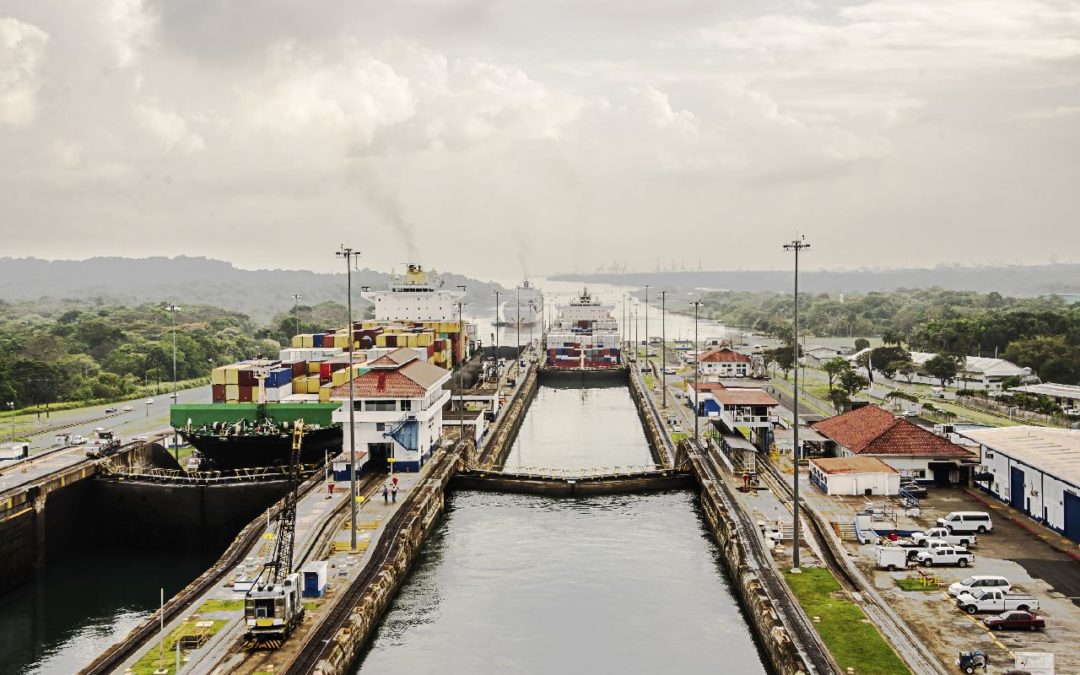I just finished David McCullough’s book on the building of the Panama Canal. At 700-pages it’s a bit of a slog so I can’t recommend it, and yet there were so many fascinating stories and details. Here are my top three.
Amazing Early Example Of A Control System
While only a small part of the story of building the canal, the control system built by GE was unprecedented in its scale and automation.
“The operation of each flight of locks was to be run from the second floor of a large control house … one man at one control board could run every operation in the passage of a ship except the movement of the towing locomotives.”

The control boards had scale versions of the locks so the Operator could see the current state of the locks and importantly prevent the Operator from doing something out of sequence.
“Everything that happened in the locks — the rise and fall of the fender chains, the opening and closing of the gates — happened on the board in the appropriate place at precisely the same time. … The genius of the system, however, was in the elaborate racks of interlocking bars concealed from view beneath the board … the switches were interlocking, mechanically. Each had to be turned in proper sequence, otherwise it would not turn. It was impossible therefore to do anything out of order or to forget to take any crucial step in the necessary order.”
Those 64 foot long control boards operated mostly unchanged for fifty years. The details are all in Chapter 21 if you do look at the book.
Yellow Fever and COVID-19
One of the huge challenges of building the canal was having a workforce that could survive the disease. As the medical community struggles to understands how the novel (how prescient was this description) coronavirus works, I was reading about the efforts to understand and stop yellow-fever. It is humbling to see how long the efforts and theories of the world’s best were so wrong, and how complex the infection process actually was.
Eventually Dr. Finlay determined that only one type of mosquito, Stegomyia fasciata, was the yellow-fever carrier, but that was just the start. Even with the now seemingly crazy exercise of having yellow-fever carrying mosquitos bite willing victims in trials, Dr. Finlay could not cause yellow-fever. The mystery was eventually solved:
“For the mosquito to become infected it must suck the blood of the yellow-fever patient within the first three days after the patient has contracted the disease. Then once the mosquito has taken the blood, another twelve to twenty days must pass before the mosquito can transmit the infection. Finlay had simply been applying his infected mosquitos too soon.”
As we see the myriad of symptoms, and lack of symptoms, by those with COVID-19, it is important to remember that there is a long history of even the best scientists being wrong. And an equally long history of these scientists showing the tenacity and skill to eventually figure it out.
Nation States Will Justify Bad Behavior
While the US doesn’t have the colonial history of Europe, the US did take Panama from Colombia with a fig leaf of supporting a successful revolution. All so they (we) could get the rights to the land to build the Panama Canal on the terms America wanted. I knew the short version, of this history, but reading about the planning, winks and nods, and quick revolution and recognition is eye opening.
This is a vivid example that nation states often have little difficulty justifying actions that they would consider bad and unacceptable behavior in others. Stuxnet is another vivid example, as is the Defend Forward maxim and focus on offensive cyber weapons. The sooner we can improve the defense and resilience of ICS the better to reduce the temptation.

